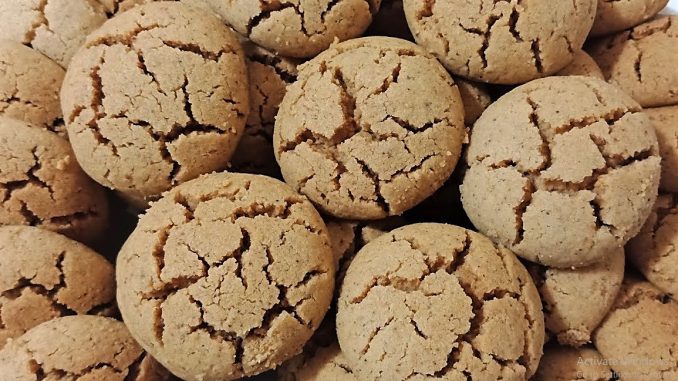
Ghriba is a famous cake that never leaves the Moroccan tables during the celebrations of holidays or Eid. It is also known as “El Bahla” in some regions where it is prepared differently but it always keeps the same main ingredients which are butter, sugar and flour.
Ghriba always goes with mint tea, which adds a special flavor to it. This national cake is prepared by the rich as well as the poor, since its preparation does not cost much compared to other cakes that require expensive ingredients.
Some sources believe that Ghriba is of Turkish origin, since it also exists in other countries of the Arab world, including Libya, Tunisia and Algeria, where it is called “Ghribia”. Its pronunciation also differs in the countries of the Levant which call it “Laghrayba” and in Egypt where it is called “El Ghourayiba”, while in Iraq, where it is also famous, it is known as “Shakar-lama”.
The Ghriba is therefore famous in several Arab countries, it is always present in the celebrations of Eid El Fitr and its ingredients differ from one country to another. While some use flour, others prefer hummus or white corn.
Ghriba is full of important dietary components, it contains a lot of carbohydrates, proteins, calories, saturated fats, but without cholesterol.
Moroccans sometimes use almonds in the preparation of this famous cake, because it gives it a unique taste. This type of Ghriba is prepared during weddings, engagements and other festivities, unlike the traditional Ghriba which is prepared with cocoa and does not cost much, as it is also prepared for daily consumption. There is another type of the same cake, called “Fiber Ghrayba” which is not only delicious, but also good for your health.
The reputation of Moroccan Ghriba has spread beyond the country’s borders, which is why the American newspaper “The New York Times” reserved a post on its official Instagram account for it, followed by more than 10 million subscribers. The newspaper also shared the traditional steps in preparing the cake, describing it as crispy on the outside but sweet as butter on the inside and claiming that it is a cake prepared by Moroccans throughout the year.
Many Moroccans reacted to the post, leaving comments in Arabic, while foreign subscribers expressed their love for the cake and for Moroccan culinary art and culture in general.

Be the first to comment